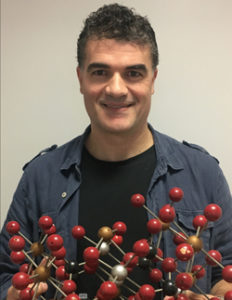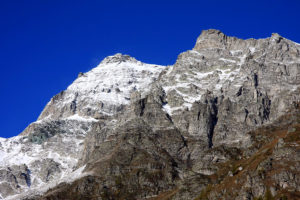Marchettiite joins the New Carbon Mineral Roster as #13
23 February 2018Marchettiite is the latest in a series of new organic carbon minerals approved by the Commission on New Minerals, Nomenclature and Classification. It is the 13th and latest addition resulting from the Deep Carbon Observatory’s Carbon Mineral Challenge, a quest to find approximately 145 predicted missing carbon minerals.

Fabrizio Nestola. Source: Mindat.org
“It’s clearly organic,” added Carbon Mineral Challenge project lead Daniel Hummer (University of Southern Illinois, USA), “which can sometimes make it tricky to determine how all the atoms fit together. In this case, though, a little digging revealed that this compound is already known. The new mineral is basically a molecule of ammonia combined with a molecule of uric acid, with biological origins that can be traced back to the urine or feces of a bird or other animal.” Neither Nestola nor Hummer would speculate about what kind of animal has produced this new mineral.

Monte Cervandone. Source: Alessandro Vecchi, Wikipedia
Marchettiite was discovered in the mineral-rich fissures of Mount Cervandone in the Italian Alps. The region is also host to the minerals deveroite-(Ce) (Guastoni et al., 2013), moolooite (Guastoni, 2009), lindbergite (Albertini and Meisser, 2012), humboldtine, and whewellite (Guastoni et al., 2015). Marchettiite is the rarest mineral in that locality – only one sample was found.
A renowned, local, amateur mineral collector, Gianfranco Marchetti, discovered the sample in 1985. Yet, researchers didn’t get the opportunity to analyze the sample until after Marchetti’s death in 2013. Nestola explained that the new mineral was named in Marchetti’s honor.
Is a new class of carbon mineral emerging?
Marchettiite is a cousin of two other new carbon minerals, tinnunculite and triazolite, which also form from the urine or excrement of birds or animals. “It’s interesting that three of our new carbon minerals share the same story,” observed Hummer. “It could indicate that there’s an entire class of organic minerals that result from the excretions of animals, expanding the way we look for new carbon minerals.”
References
Guastoni, A., Nestola, F., Gentile, P.,Zorzi, F., Andò, S., Lorenzetti, A. andMattioli, V. (2017) Marchettiite, IMA 2017-066. CNMNC Newsletter No. 40, December 2017, page 1578; Mineralogical Magazine, 81, 1577–1581.

